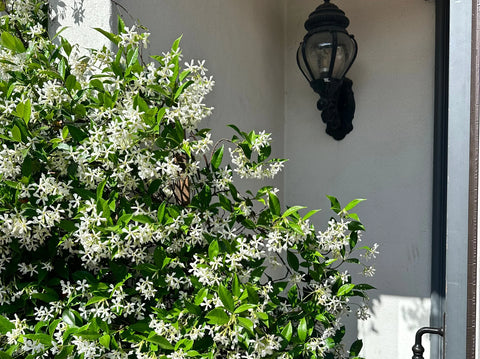The Taylor Juniper is an elegant, narrow evergreen known for its tall, slender form and lush green foliage. This versatile tree is often considered one of the best tall evergreen trees for privacy, making it a favorite for privacy screens, windbreaks, or as a vertical accent in the landscape. In this guide, we'll explore the best ways to plant and care for Taylor Juniper, ensuring it thrives year-round.
What is a Taylor Juniper?
The Taylor Juniper (Juniperus virginiana 'Taylor') is a hardy, fast-growing columnar tree that can reach heights of 15-20 feet with a spread of only 3-5 feet. Its dense, evergreen foliage is a rich blue-green color, providing year-round beauty. With its tall, narrow form, this tree is ideal for smaller spaces where height is desired without taking up too much horizontal space, making it one of the best types of trees for privacy.
Why Choose Taylor Juniper?
- Ideal for Privacy: Its dense foliage makes it perfect for creating natural privacy screens or windbreaks, serving as an excellent evergreen tree privacy screen.
- Low Maintenance: Once established, it requires minimal care and is drought-tolerant.
- Year-Round Color: Its evergreen foliage adds beauty to the landscape in all seasons.
- Ideal Soil and Climate: This juniper prefers well-draining soil, but it can tolerate a variety of soil types, including sandy or rocky soils. It is hardy in USDA zones 4-9, making it an excellent choice for many climates, from hot summers to cold winters. The Taylor Juniper is also considered one of the best evergreens for privacy screen in diverse environments.
How to Care for Taylor Juniper
The Taylor Juniper is relatively low-maintenance but thrives when given the right growing conditions.
1. Sunlight Requirements
Plant your Taylor Juniper in full sun for optimal growth. It requires at least 6-8 hours of direct sunlight daily to maintain its dense, healthy foliage.
2. Watering Needs
Water the tree regularly during its first year to establish a strong root system. Once established, Taylor Juniper becomes highly drought-tolerant and requires only occasional watering during dry periods.
3. Ideal Soil and Climate
This juniper prefers well-draining soil, but it can tolerate a variety of soil types, including sandy or rocky soils. It is hardy in USDA zones 4-9, making it an excellent choice for many climates, from hot summers to cold winters.
4. Fertilizing
Fertilize in early spring with a balanced, slow-release fertilizer to promote new growth. Once mature, Taylor Juniper typically does not require much feeding, especially in nutrient-rich soil.
Common Issues and Solutions
• Root Rot: Overwatering or poorly draining soil can cause root rot. Ensure the soil is well-draining and avoid waterlogged conditions.
• Pests: While generally pest-resistant, Taylor Juniper can occasionally attract bagworms or spider mites. Treat infestations with insecticidal soap or neem oil.
Pruning and Maintenance
This juniper requires little to no pruning, thanks to its naturally tidy, upright shape. However, you can prune to remove any dead or damaged branches in late winter or early spring. Avoid heavy pruning, as it can disrupt the tree's natural form.
Final Thoughts on the Taylor Juniper
The Taylor Juniper is an excellent choice for homeowners seeking a low-maintenance, tall, and narrow evergreen tree. Its compact footprint, combined with its drought tolerance and year-round foliage, makes it a versatile addition to any landscape. Whether used as a tall tree for privacy, for wind protection, or as a vertical accent, this hardy tree offers both beauty and functionality. It's also a great option for those looking for a privacy tree that grows fast. Shop the Taylor Juniper tree and see for yourself why it is a customer favorite for privacy.


